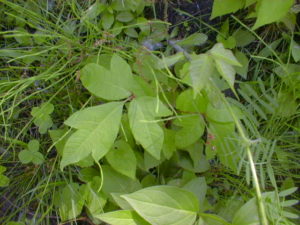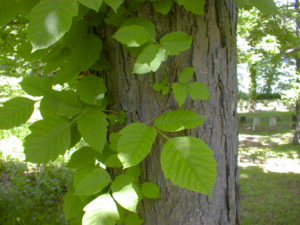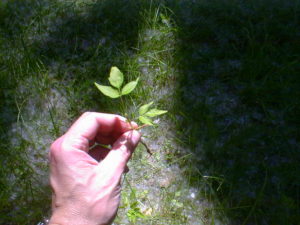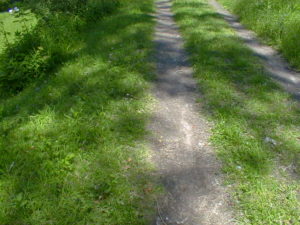Poison Ivy is throughout many of the parks and the birds love the berries. The seeds of these berries are then returned to the earth by the birds along with some fertilizer.
I have found Poison Ivy in both the City and suburbs. In the last two days I have seen it on East Blvd. next to the sidewalk, Henrietta Street near the Highland Park Diner (on a tree), and on Aberdeen Street. The photos below are from Mt Hope Cemetery. Mendon Ponds has a lot of Poison Ivy also.
Some people have no reaction to the oils in the Poison Ivy leaves, roots and vines. Many people get a rash with blisters that are no fun at all! A few people have serious allergic reactions and need immediate medical attention. With so much of it around, please take the time to familiarize yourself with it.
Can you guess which one of these plants is poison ivy?
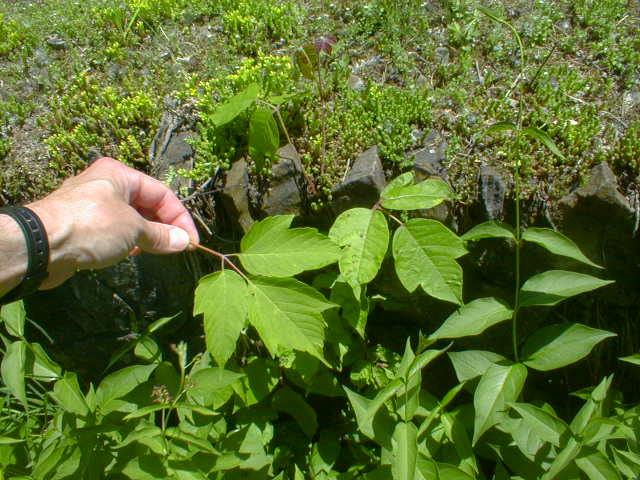
If you guessed that the one I’m holding is not poison ivy, then you’re right! That’s a box elder tree!
These are both photos of Poison Ivy. The one on the right has a much rounder and broader leaf margin.
Just in this one photo there are several leaf variations of Poison Ivy. On the right and left are some leaves of Boston Ivy. Early Boston Ivy leaves have a group of three small leaves.
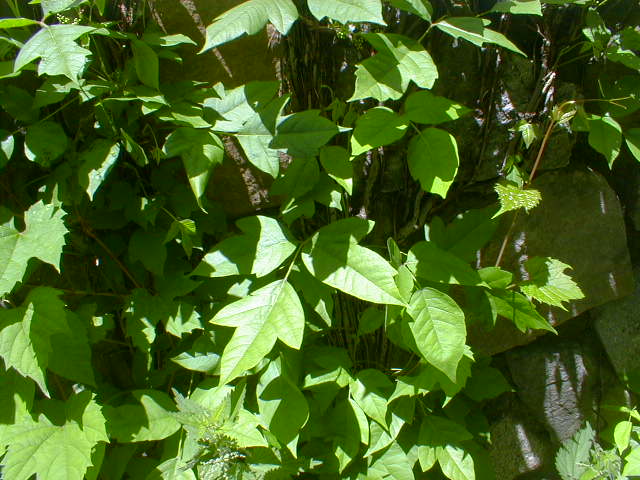
The new leaves of Poison Ivy are often reddish and glossy as below.
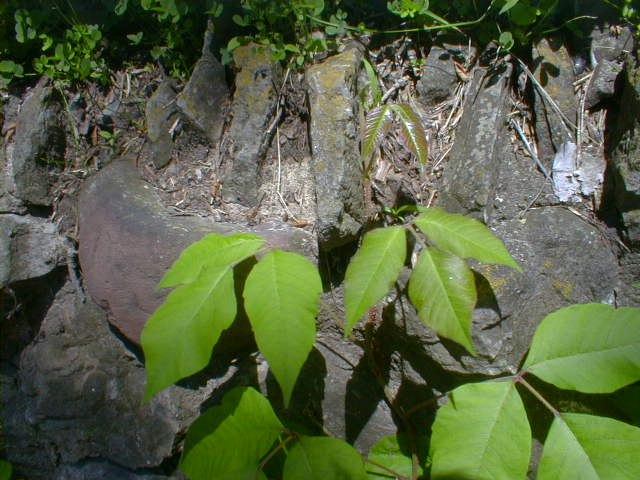
This is Poison Ivy climbing a street tree on Henrietta Street near the Highland Park Diner. Notice the immature berries are in the center on this one.
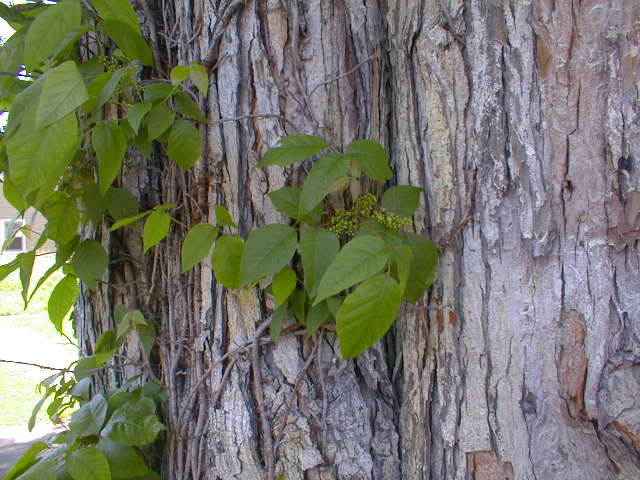
Box Elder is the most common look-a-like for Poison Ivy. I am holding three leaves against a background of Poison Ivy, also a bit of Woodbine.
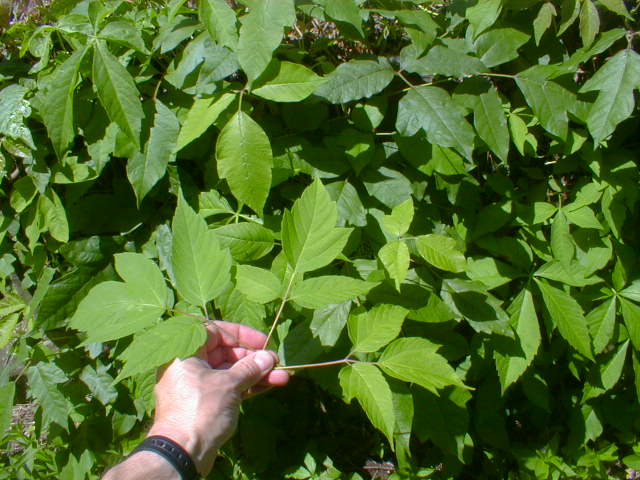
One of the best ways to differentiate Poison Ivy is to check how the leaves are oriented to the stem. In the above photo, the Box Elder leaves are opposite each other. Poison Ivy is alternate.
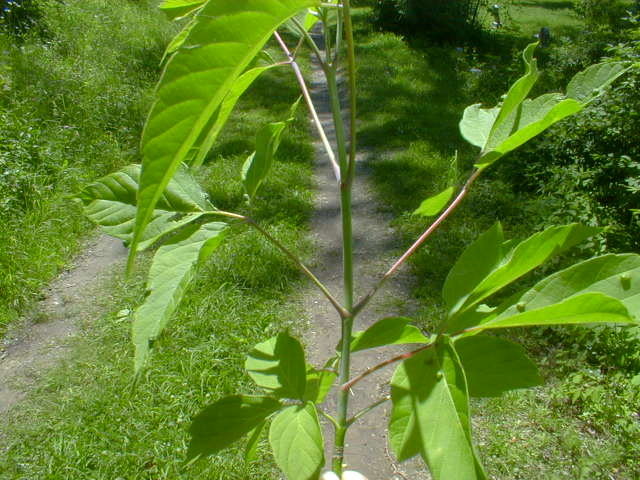
Although it is in the shade, it is possible to see that the Poison Ivy leaves alternate along the stem.
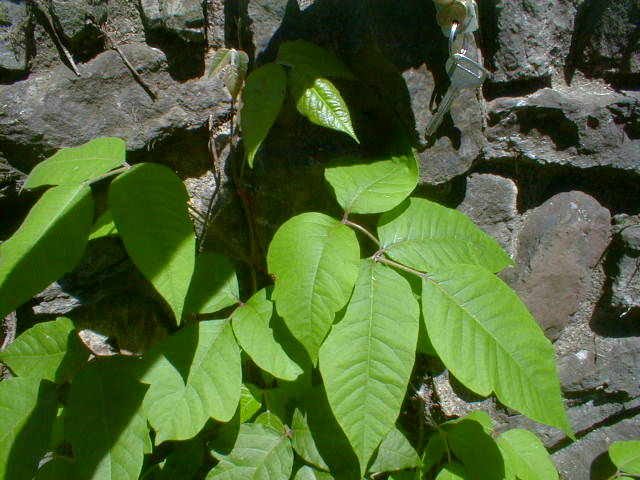
Poison Ivy to the right, leaf margins are very similar.
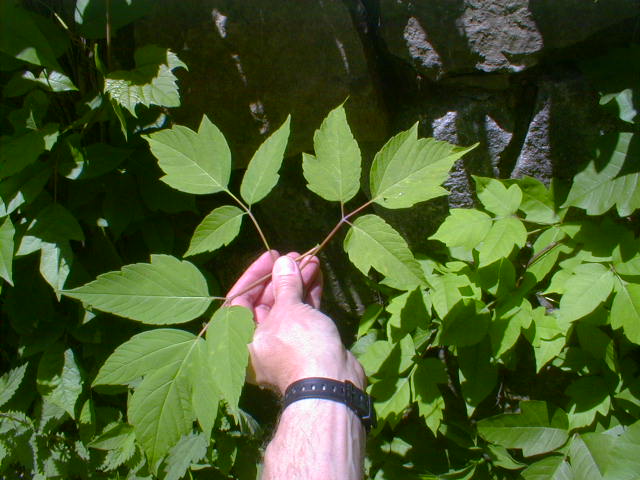
This is a Box Elder seedling growing above some Poison Ivy to bottom left. Box Elder often has groups of five leaves.
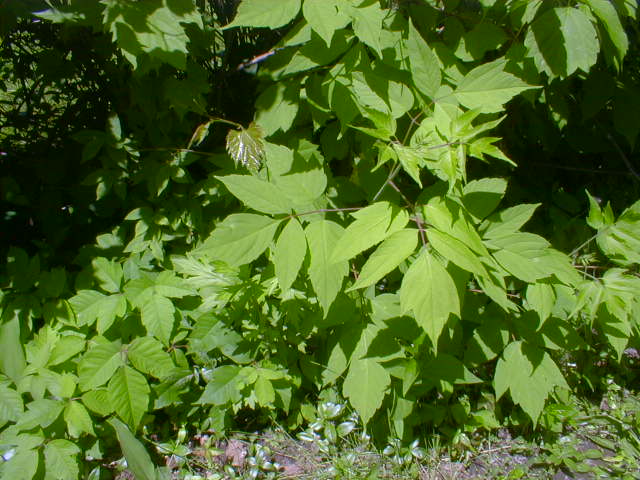
Both Photos show Tree of Heaven (Alianthus) seedlings. This tree is an urban weed & very common.
These photos of Woodbine, otherwise known as Virginia Creeper, show mostly five leaf groups – but note that a few have only three and others look like just three. This vine climbs all over trees, and should be removed before they smother the tree. Very aggressive! Great fall color and berries for the birds. Often a gathering place for Japanese beetles.
On the left is a comparison of Poison Ivy next to the Raspberry leaf I am holding. On the right is a Raspberry bush – leaves of three beware (of thorns in this case). The thorns give this away, but is sometimes mistaken for Poison Ivy from a few feet away.
This is a Sassafras seedling. It could be mistaken for Poison Ivy, but note the shape is quite different.

This is an Ash tree seedling, also could be mistaken at quick glance, groups of five leaves.

The Poison Ivy closeup on the left is from about two feet off the tire track – not somewhere you want to be walking with sandles on your feet!
In this photo, the poison ivy is acting as a ground cover.

This is a healthy Poison Ivy vine climbing a tree. The vine also contains the oils that cause rashes.

This tree stump is covered with Poison Ivy, some of it branching off like the branches of the tree itself – almost 6 feet long.

RESPECT POISON IVY – It is all around us!
If you would to come on a free tour to see it in person,
please email me. Several tours will be scheduled this summer.

